 Rama Bijapurkar usually offers a perspective in the mundane. She has
traversed the world of marketing, research, consulting and boardrooms making
her perspective richer and rounded. She has taught students at IIMA who are
un-merciful, irreverent and questioning - adding much to the perspective. Rama
can link up the frequency at which her yoga instructor appears at her house his
use of motorbike versus a local train to his business model; she can provide
insights to his changing practices in the light of recession. Her uniqueness is
in making these not-so-obvious linkages to present a customer to a product
centric corporate. Her first book “We are
like that only” opened up the Indian consumer in a way that had not been
done in the past. This book continues along the journey of understanding the
customer better.
Rama Bijapurkar usually offers a perspective in the mundane. She has
traversed the world of marketing, research, consulting and boardrooms making
her perspective richer and rounded. She has taught students at IIMA who are
un-merciful, irreverent and questioning - adding much to the perspective. Rama
can link up the frequency at which her yoga instructor appears at her house his
use of motorbike versus a local train to his business model; she can provide
insights to his changing practices in the light of recession. Her uniqueness is
in making these not-so-obvious linkages to present a customer to a product
centric corporate. Her first book “We are
like that only” opened up the Indian consumer in a way that had not been
done in the past. This book continues along the journey of understanding the
customer better.
The core of Rama’s argument is that businesses tend to get into a comfort
zone of offering a solution. They are looking for customers willing to buy the
offering. It is unusual for the businesses to think from the holistic customer
experience and reflect on their offerings. Who occupies the boardroom? The
market research agency or the [usually male!] customer?
If the customer is the core then board-room conversations should move to
a different plane. Instead of asking “why are customers not using our service,
or how do we get the customers to purchase our service” the board asks “what is
the customers’ end-to-end experience and how does our product/service enhance
the experience?”
 Rama takes the South-West Airlines example to define the customers as
those who travel - not just air passengers. How do you get the people who drive
between cities to use the airline? If the value proposition is shorter commute
to the airport, reliable service, then do you need lounges, business/economy
segmentation and pre-allocation of seats? Thus, the business identifies a
segment that does not emerge from the customer experience of “air” passengers.
So, do corporates fall into the trap of defining customers and offering differentiated
services to them or look at the picture of “issues in transportation” trying to
find a solutions to fill such gaps in customer experience?
Rama takes the South-West Airlines example to define the customers as
those who travel - not just air passengers. How do you get the people who drive
between cities to use the airline? If the value proposition is shorter commute
to the airport, reliable service, then do you need lounges, business/economy
segmentation and pre-allocation of seats? Thus, the business identifies a
segment that does not emerge from the customer experience of “air” passengers.
So, do corporates fall into the trap of defining customers and offering differentiated
services to them or look at the picture of “issues in transportation” trying to
find a solutions to fill such gaps in customer experience?
Rama offers several such examples. What do we need in a good hotel –
functional facilities like a shower, Wi-fi, gym, clean sheets, two restaurants
and minimal room service? Or a painting, Jacuzzi and a tub in every room; with
a swimming pool and multiple fine dining restaurants? How can a business
provide a better value proposition to the cost paid by the customer? Once
businesses obsess with the value for the customer buck, the markets expand and
segments break barriers.
Though positioned as a book on strategy its core is marketing. As a book
on strategy it should have taken the holistic view of a business and argued how
these strategies deliver consistent and superior share-holder value. The book
does not mention profits. It is implied that customer based strategies deliver
shareholder values. While her criticism about Indian business is that they “always say ‘yes, yes this is the main
thing, I agree. But what is the harm in also doing a bit of that as well?’ It
ends up usually like the sign in a restaurant we drove past recently: ‘Pisces
Seafood Restaurant [appetizing picture of a tandoori fish] specialists in
vegetarian food also’”, her book also falls victim to the criticism she
renders. It looks scattered.
 The book could have been an easy read, but it is not. It is chatty, with
scattered [anonymous] examples trying to prove a point. Anonymity makes it
difficult to understand the context and relate to the illustrations. There are
several passages that read like: “Here is
a case study that illustrates this confusion: We once worked with a well-known
FMCG company in the business of household cleaning. Their product range
comprised of a brand of antiseptic, that we will, for this discussion, call
Dash-Dash antiseptic liquid, Dash antiseptic soap [both on the ‘kills germs’
position] and a brand of toilet cleaner that we will call Hiss.”
The book could have been an easy read, but it is not. It is chatty, with
scattered [anonymous] examples trying to prove a point. Anonymity makes it
difficult to understand the context and relate to the illustrations. There are
several passages that read like: “Here is
a case study that illustrates this confusion: We once worked with a well-known
FMCG company in the business of household cleaning. Their product range
comprised of a brand of antiseptic, that we will, for this discussion, call
Dash-Dash antiseptic liquid, Dash antiseptic soap [both on the ‘kills germs’
position] and a brand of toilet cleaner that we will call Hiss.”
Rama does not give the real name because of consulting, confidentiality
and contractual interests. At the same time the example is important to make a
point. If I don't know if this Dash-Dash antiseptic liquid is Harpic or Domex I
lose the context. While there are the usual Nirmas, Nokias and the Hero Hondas
that come up from the public domain for discussion, her own consulting insights
are shrouded in generality and anonymity. For somebody trying figure out a new
paradigm of customer insights, this effort looks wasted.
This book is one more instance of the editorial failure of Sage
publications. Apart from the usual typos, editorial inputs on the general style
of rendering would have made this book a delight. The importance of the book is
lost in chatty irritation, while the customer quietly slips out of the
boardroom as time stressed board members struggle with the style!
Customer in the Boardroom?
Crafting Customer-Based Business Strategy
Rama Bijapurkar
Sage [Response Business Books]
pp.232. Price Rs.495






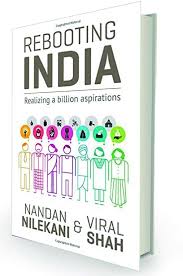








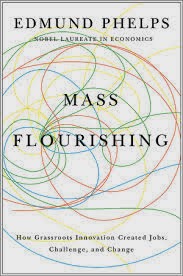









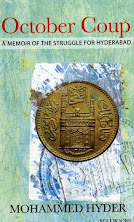

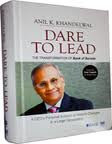
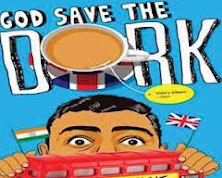













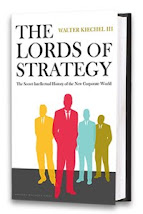











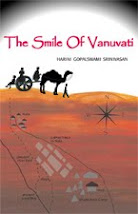


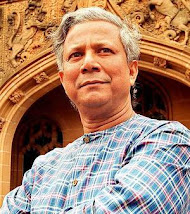








![Hyderabad: A Book [or two] and A Movie](http://3.bp.blogspot.com/_mxWA9ZVkKhQ/S0vnLAO90CI/AAAAAAAABYM/WgbSbAcAaEk/S214/luther1.0.jpg)

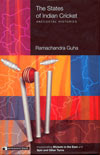





![Two Lives [and this is not about Vikram Seth]](http://1.bp.blogspot.com/_mxWA9ZVkKhQ/S0vjkyDYRvI/AAAAAAAABXM/mJGK-_gZiNg/S214/mansur.jpg)





No comments:
Post a Comment